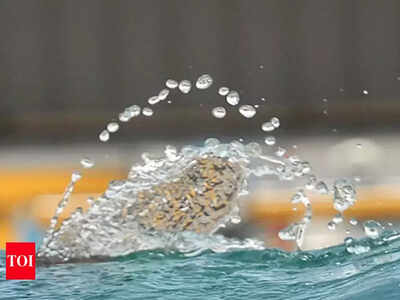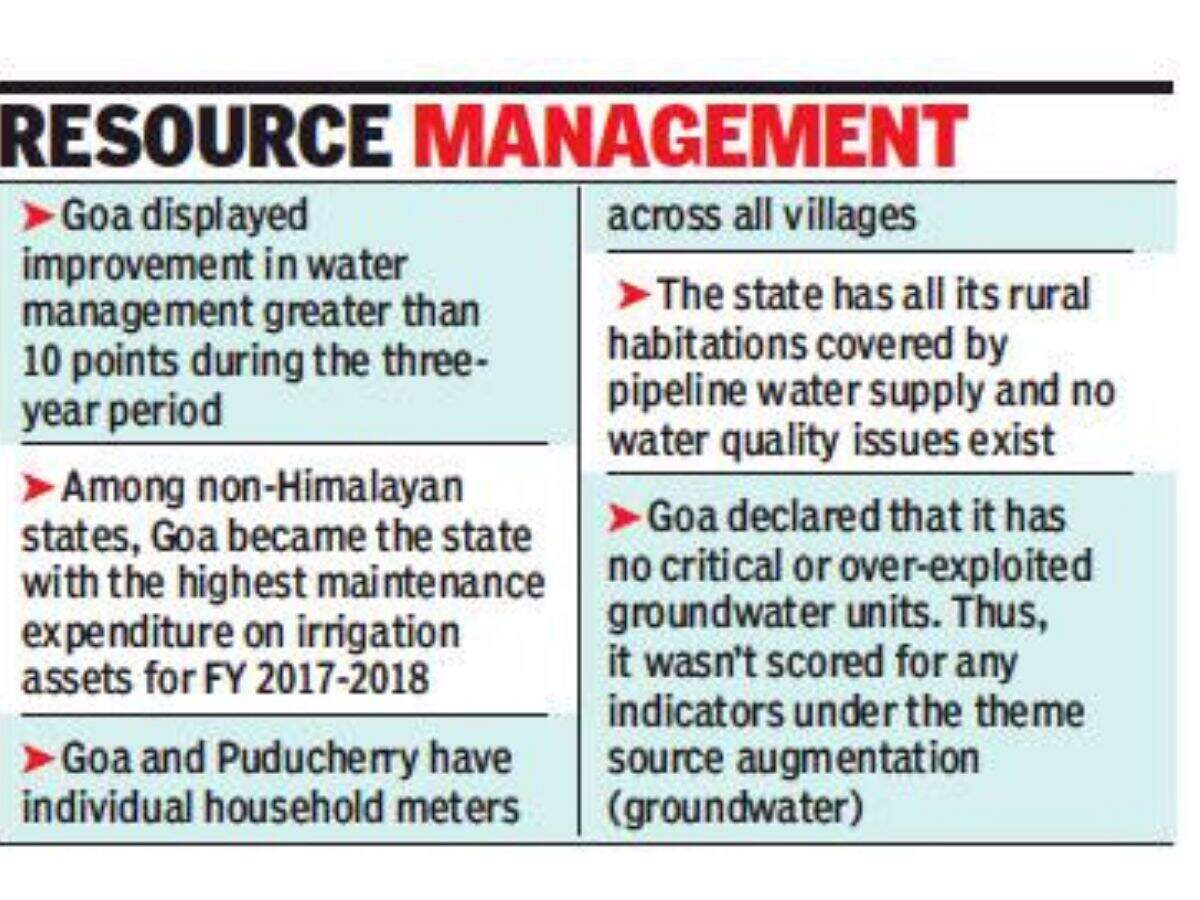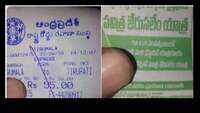
PANAJI: Goa may have shown the sharpest improvement among states and union territories on Niti Aayog’s Composite Water Management Index (WMI), but the data released on Friday also shows several gaps by the state in maintaining data on its water resources and water management infrastructure.
While for 2015-16, Goa was among 14 ‘low-performing’ states, in 2018-19, it, along with Haryana and Telangana, was ‘able to cross the 50-point threshold’, after it was able to submit data, previously unavailable with it.

In fact, the Niti Aayog report itself states that Goa’s drastic improvement on the CWM index is because the state was able to provide required data for the 2019 report, which it was unable to give during previous assessments by the central government.
“States such as Haryana, Goa, Uttarakhand, which were unable to report data on several indicators in the previous years, have also improved considerably in terms of data reporting. This has contributed substantially towards the increase in their index scores,” states the report, which is the first composite data compilation of all states and UTs in India, information that is expected to help better manage water resources.
But even now, several gaps remain in the state’s data on its water resources and water management infrastructure. For instance, the state was found to have not identified any areas where it will map infrastructure that can help recharge groundwater. Goa was required to carry out this mapping as per directives from the central government.
“Unlike Aquifer mapping, which is widely monitored by the Central Ground Water Board (CGWB), the areas mapped for recharging ground water are not documented at the national level. States such as Goa, Bihar, Tripura, Meghalaya and Sikkim have not identified any area for mapping. The states also did not have relevant data on area covered with infrastructure. Most remaining states have provided information on the indicator,” the Niti Aayog report states.
Though Goa was among five states that claimed to provide 100% of its urban population with drinking water supply, the report points out that most of the states do not follow the norm which mandates at least 135 litres per capita per day (lpcd) for urban areas.
Goa also admitted that ‘no villages are being provided with 24X7 piped water supply’ in the state and therefore it was given the score of zero on the indicator, like most other states.
For the 2019 report, Goa was also not able to provide data on assets it had created under Integrated Watershed Management Programme (IWMP).
“Geo-tagging of water conservation assets has been conducted by National Remote Sensing Agency, ISRO to set up an online geographic portal for monitoring and evaluating the performance of IWMP watersheds. The online portal displays a map, summary statistics, and other monitoring tools at the national, state, and district level for the programme, which can be used to understand the present distribution as well as additional requirement of assets in different regions. Goa was unable to report data on the indicator, and has been marked nil on the indicator in the Index calculation,” the Niti Aayog report states.
In the Niti Aayog report, the states were scored based on detailed review methodology on 20-odd indicators and their sub-indicators. State-specific reports were developed after the examination and verification of the data.
Goa was among nine states and UTs where central government officials carried out physical verification of the data and collated the information provide by states.
While for 2015-16, Goa was among 14 ‘low-performing’ states, in 2018-19, it, along with Haryana and Telangana, was ‘able to cross the 50-point threshold’, after it was able to submit data, previously unavailable with it.

In fact, the Niti Aayog report itself states that Goa’s drastic improvement on the CWM index is because the state was able to provide required data for the 2019 report, which it was unable to give during previous assessments by the central government.
“States such as Haryana, Goa, Uttarakhand, which were unable to report data on several indicators in the previous years, have also improved considerably in terms of data reporting. This has contributed substantially towards the increase in their index scores,” states the report, which is the first composite data compilation of all states and UTs in India, information that is expected to help better manage water resources.
But even now, several gaps remain in the state’s data on its water resources and water management infrastructure. For instance, the state was found to have not identified any areas where it will map infrastructure that can help recharge groundwater. Goa was required to carry out this mapping as per directives from the central government.
“Unlike Aquifer mapping, which is widely monitored by the Central Ground Water Board (CGWB), the areas mapped for recharging ground water are not documented at the national level. States such as Goa, Bihar, Tripura, Meghalaya and Sikkim have not identified any area for mapping. The states also did not have relevant data on area covered with infrastructure. Most remaining states have provided information on the indicator,” the Niti Aayog report states.
Though Goa was among five states that claimed to provide 100% of its urban population with drinking water supply, the report points out that most of the states do not follow the norm which mandates at least 135 litres per capita per day (lpcd) for urban areas.
Goa also admitted that ‘no villages are being provided with 24X7 piped water supply’ in the state and therefore it was given the score of zero on the indicator, like most other states.
For the 2019 report, Goa was also not able to provide data on assets it had created under Integrated Watershed Management Programme (IWMP).
“Geo-tagging of water conservation assets has been conducted by National Remote Sensing Agency, ISRO to set up an online geographic portal for monitoring and evaluating the performance of IWMP watersheds. The online portal displays a map, summary statistics, and other monitoring tools at the national, state, and district level for the programme, which can be used to understand the present distribution as well as additional requirement of assets in different regions. Goa was unable to report data on the indicator, and has been marked nil on the indicator in the Index calculation,” the Niti Aayog report states.
In the Niti Aayog report, the states were scored based on detailed review methodology on 20-odd indicators and their sub-indicators. State-specific reports were developed after the examination and verification of the data.
Goa was among nine states and UTs where central government officials carried out physical verification of the data and collated the information provide by states.
Trending Topics
LATEST VIDEOS
More from TOI
Navbharat Times
Featured Today in Travel
Quick Links
Lok Sabha Election Schedule 2019Lok Sabha Election NewsDelhi Capitals teamMI team 2019Rajasthan Royals 2019RCB team 2019Maharashtra Lok Sabha ConstituenciesBJP Candidate ListBJP List 2019 TamilnaduShiv Sena List 2019AP BJP List 2019Mamata BanerjeeBJP List 2019 MaharashtraPriyanka GandhiBJP List 2019 KarnatakaAMMK Candidate List 2019BJP List 2019 WBLok Sabha Elections in Tamil NaduBSP List 2019 UPNews in TamilLok Sabha Poll 2019Satta Matka 2018PM ModiMahagathbandhanNagpur BJP Candidate ListChandrababu NaiduTamil Nadu ElectionsUrmila MatondkarNews in TeluguMadras High CourtTejashwi YadavArvind KejriwalTejasvi SuryaPawan KalyanArvind KejriwalYogi AdityanathJaya PradaSatta King 2019Srinagar encounter
Get the app







